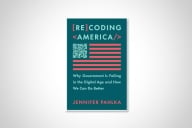You have /5 articles left.
Sign up for a free account or log in.
Yesterday’s post, which bounced off a summary of a study of racial salary gaps among different majors, elicited a thoughtful response from Chad Orzel. Orzel is a physicist, and he offers a perspective from within STEM that lands differently from the original article. It’s worth the read.
The part that struck a chord for me, though, was about students discovering that a given major just isn’t for them.
That’s real, but it’s a part of the “access” or “exposure” story that we tend to downplay. The story that community college folks like to tell is of exposing students to possibilities that they didn’t know existed, or of showing them that professions or identities that seemed out of reach are actually available. That story is true and valuable. But it’s also only partial.
Part of what makes early exposure to different fields useful is figuring out which ones just don’t speak to you.
The less-often-discussed flip side of “anyone can do anything” is “nobody can do everything.” Choosing necessarily involves narrowing down.
That’s scary when it seems like there’s only one decent option and it isn’t clicking. But if good options are more plentiful, it isn’t so bad.
In nonacademic fields, this is obvious and mostly uncontroversial. In my case, for example, it became clear very early that professional baseball was out of the question. I liked the sport, but from the beginning, neither the talent nor the drive to improve was there. I was OK with that; there were other things I wanted to do.
To the extent that the distribution requirement model of general education has some sort of pedagogical justification, I think it’s in forcing students to try samples of things they might not otherwise discover. Sometimes that leads to those treasured “eureka!” moments. But if we’re being honest, it often doesn’t. Although it hurts my soul every time I hear it, I understand the impulse to “get your gen eds out of the way”; after doing nothing but fulfilling requirements through the K-12 years, arriving at college only to be required to take more things you don’t find interesting can be frustrating.
The tricky part, institutionally, is encouraging students to stay the course even if they haven’t found what clicks for them yet. It’s one thing to pay dues in the form of an annoying requirement on the way to getting something you know you want; it’s quite another to endure a difficult and unappealing class when you aren’t quite sure you belong there in the first place.
This is where college success courses along the lines of Ethnographies of Work can be helpful. If a lost student identifies a career goal, mapping the academic path toward it is much easier. And it’s easier to stay the course when you believe that it’s leading somewhere you want to go.
Whatever the method, though, we can’t always assume that students walking in the door know exactly what they want. Some do, and that’s great. But many don’t know what they don’t know. And sometimes “student success” wears a disguise. Discovering that the original idea wasn’t the right one is part of learning. And Orzel is probably right that the STEM fields experience that to a greater degree, given the higher extrinsic rewards that STEM jobs offer. Most people who major in English don’t do it for the money.
In an age of performance funding, the idea that some forms of struggle and even failure are parts of learning is a tough sell. But they are. Nobody can do everything.



